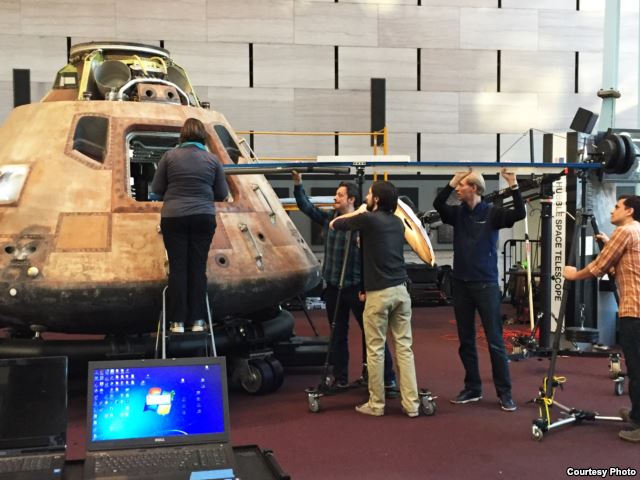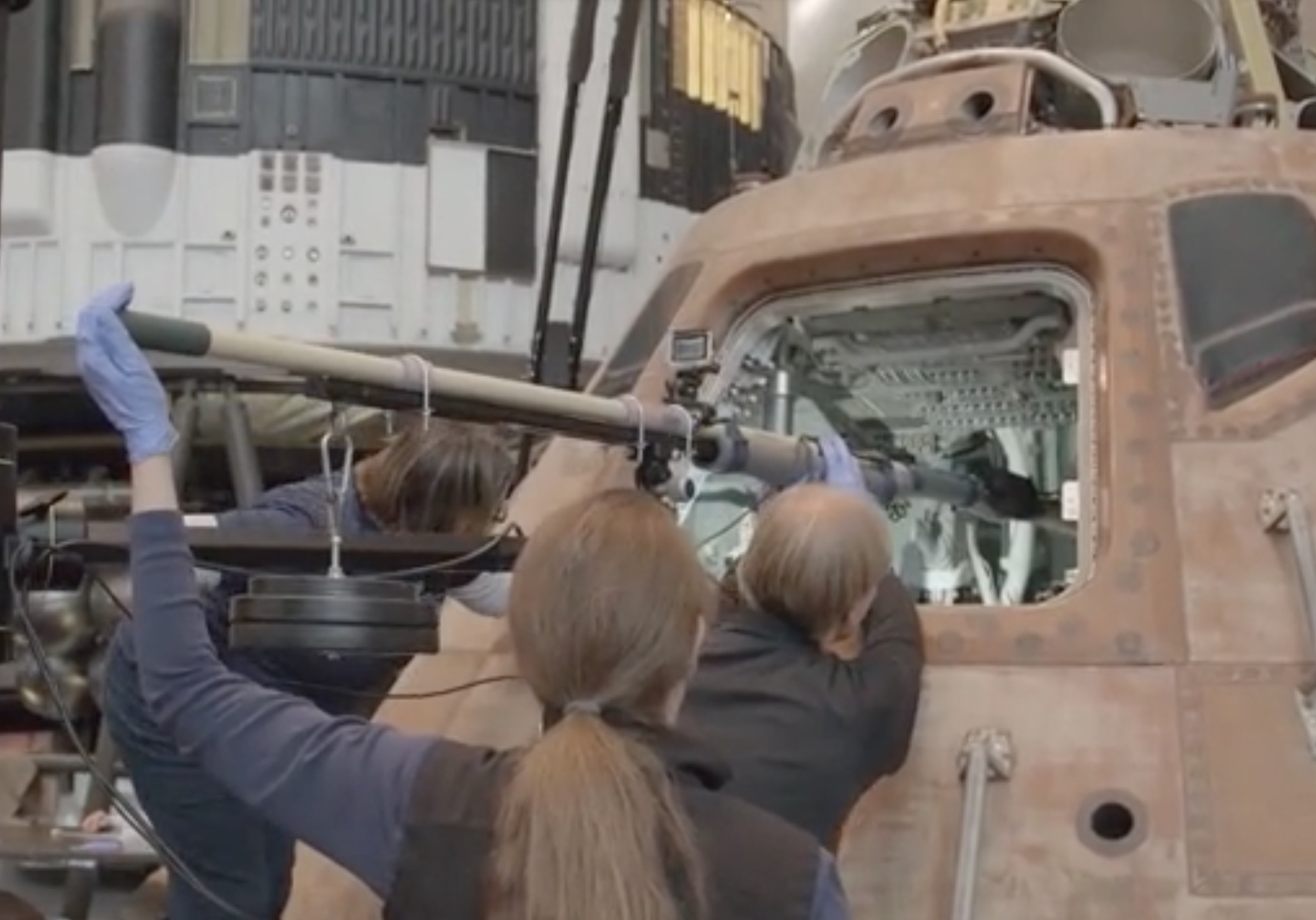
A team from The Smithsonian and Autodesk are performing an intricate 3D scan of the actual Apollo 11 capsule.
The possibly most-famous space capsule in history normally sits quietly in the lobby of the Air and Space Museum in Washington DC, covered with a clear acrylic sheet to prevent damage. Visitors may get a slight glimpse of the interior, and cannot even touch the outside of the capsule due to the acrylic shield.
To make the work more accessible, workers have removed the shield and are making a very detailed 3D scan of the outside and inside of the capsule. They’re using specialized optical cameras that can take 50 megapixel images, each attached to booms because they are also not allowed to touch the capsule. They’re anticipating to collect 6GB of optical data that will be processed into a fully 3D representation of the Apollo 11 capsule.

The completed 3D model will be used in multiple ways, not the least of which is a brand new display of the titanium and steel capsule to open in 2020. More than likely they’ll have an interactive 3D display allowing visitors to explore the interior of the ship.
But of more interest to us is that the completed 3D model will apparently be available in the “middle of 2016”. The VOA story says users can “print a 3-D replica of the module”, so we’re thinking this model will be released for download, instead of being held privately as so many notable 3D models are these days.
We’ve been encouraging the use of 3D scanning to produce printable 3D models for ancient artifacts for some time, but Apollo 11 is not exactly “ancient”.
But it is just as important.
Via Voice of America

